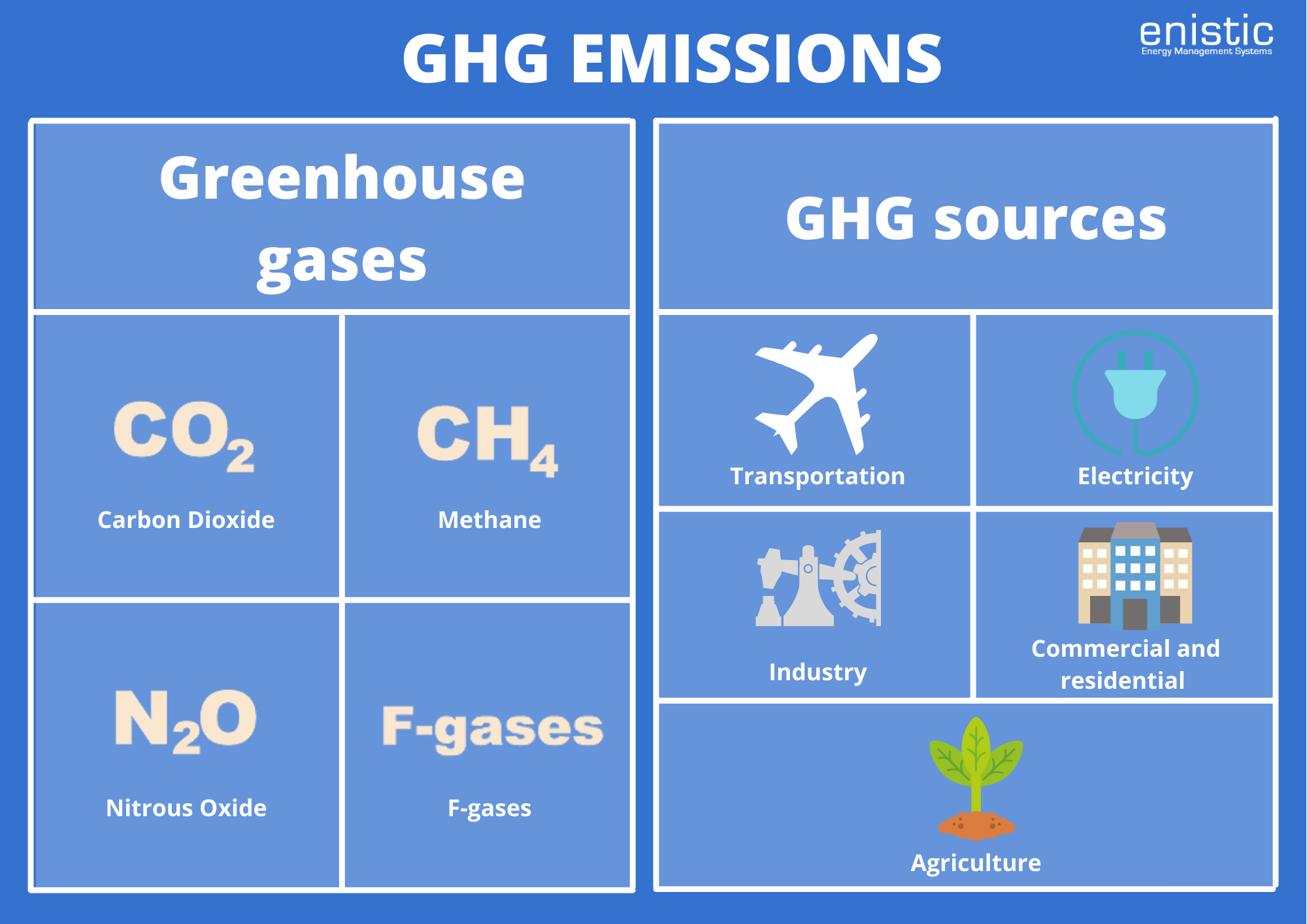greenhouse gas emissions
What are the Greenhouse Gas Emissions?
Greenhouse gases (GHG) are those gases that trap heat in the atmosphere. Global average temperatures have increased by more than 1℃ since pre-industrial times due to increased GHG emissions and these emissions are forecast to jump this year by the second-biggest annual rise in history, as global economies pour stimulus cash into fossil fuels in the recovery from the Covid-19 recession.
What are the types and sources of GHG?
The key GHG in the Earth’s atmosphere are as follows:
Carbon dioxide (CO2) – primarily from burning fossil fuels, industrial processes and deforestation.
Methane (CH4) – through coal, gas and oil production, livestock and agricultural activities.
Nitrous oxide (N2O) – primarily from agricultural activities.
Fluorinated gases (F-gases) – through industrial processes, refrigeration, and are used in a variety of consumer products.
Human activities are responsible for almost all of the increase in greenhouse gases in the atmosphere over the last 150 years. The principal GHG emissions drivers are transportation, electricity, industry and manufacturing, commercial and residential, and agriculture.

Why are GHG Emissions so important?
GHG emissions need to be controlled because, at the current rate, the Earth’s average temperature could increase by 2° C by 2036. The consequences of this are numerous:
Thawing of glacial masses.
Flooding of islands and coastal cities.
More extreme and frequent weather events.
Desertification and soil degradation.
Impact on agriculture and livestock.
Extinction and migration of species (including humans).
Food shortages.
Increased risk of spread of diseases and pandemics.
How can I reduce GHG Emissions?
Once you have done the analysis, you will be able to understand your biggest GHG emission drivers and begin work to reduce them. Simple measures could take the form of:
Moving to green, renewable energy.
Upgrading to more energy-efficient LED lights.
Using public transport and non-polluting vehicles.
Installing solar panels.
Increased use of video-conferencing instead of travel.
Once you have taken all possible measures to decrease your emissions, you can then purchase carbon offsets to effectively become carbon neutral. You could even go one step further and look to offset your lifetime footprint!
How can Enistic help?
At Enistic we provide proven, science-based, custom GHG emissions reduction plans over 1, 3 and 5 years.
Following our effective 7 step plan, we can help you to build a carbon zero strategy:
1. Outline clear objectives and a timeline
2. Measure and manage your emissions data
3.Make plans for long term impact and benefit
4. Always work to the best-practice standard
5. Establish carbon reductions you can manage prior to carbon offsetting
6. Ensure your offset projects meet detailed scrutiny
7. Full and transparent reporting
Whether you are just starting out on your emissions reduction journey setting up an environmental group at your company or wanting to fully review and intelligently address your carbon footprint, we can help you to make a genuine impact.
Need help? Get FREE advice from our SECR experts
If you have any questions book a free SECR Compliance check up with one of our lead assessors.
Fill out the form and we will arrange a meeting with you.
*Your details will only be used to contact you about your appointment.





